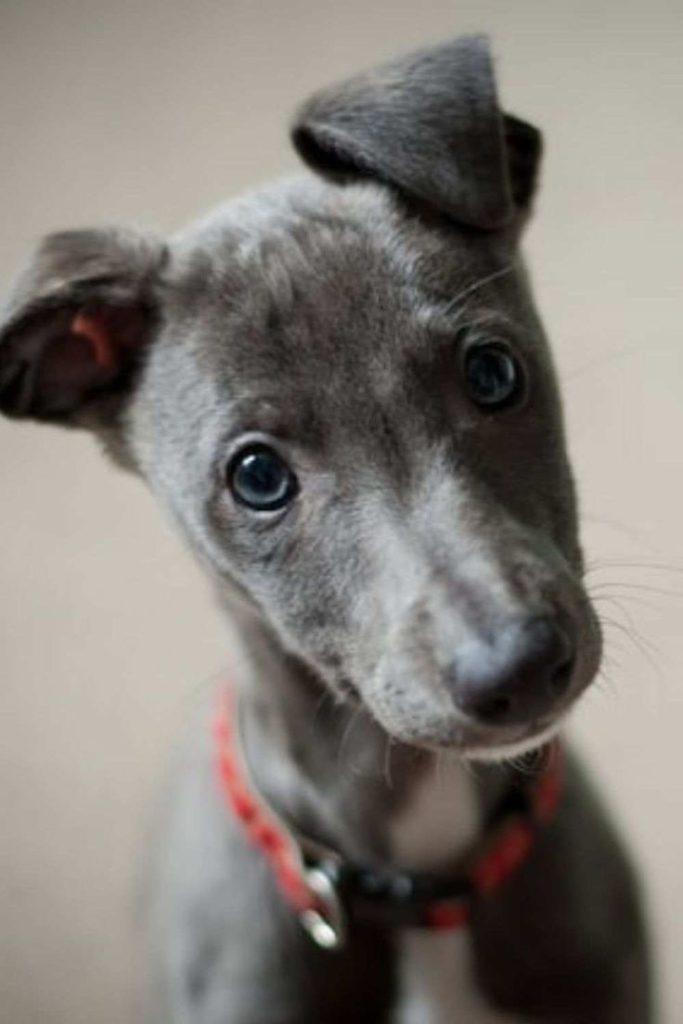
Skin infection could significantly make your puppy uncomfortable, it could cause itching and soreness.
Though some puppy skin infections are mild and some are chronic, I recommend that you take your puppy to the vet for professional treatment, despite the skin infection your puppy has.
I would not be able to enlighten you on all the puppy skin infection because there are quite a lot, but in this blog post I will talk about the most common ones that your puppy would likely have at some point while growing up and with their pictures.
How do I know if my puppy has a skin infection

They are a lot of symptoms of skin infection in puppies. One of the most common symptoms of puppy skin infection is itching.
Like in humans it is normal for a dog to itch, but when the itching becomes consistent, you should check on your puppy they might have developed an infection.
Puppies tend to rub the itchy areas of their body on objects. Also they lick their paws and the itchy areas to soothe the itch.
Other signs and symptoms of puppy skin infection include:
Hair loss/ bald patches
Skin sores
Lesions on the skin
Dry skin
Redness
Lumps
Redness
The most common puppy skin infections
Folliculitis
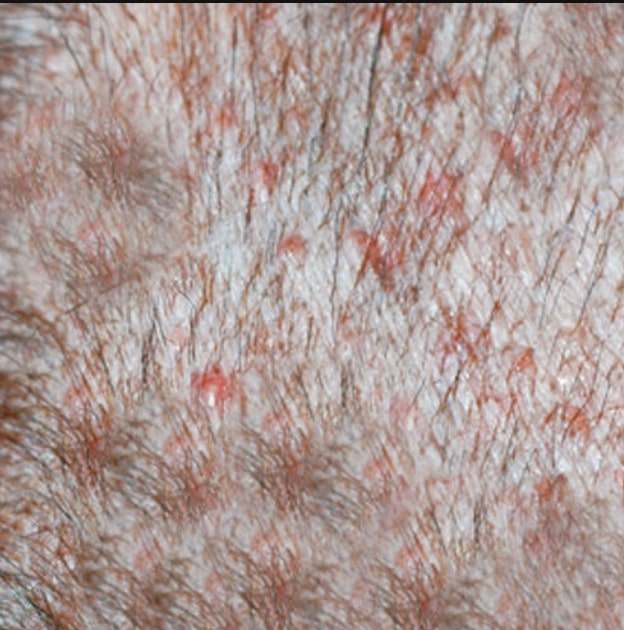
Folliculitis is a common skin conditions in puppies, folliculitis is inflammation of the hair follicles, which is often caused by bacteria.
Folliculitis occurs when a healthy hair follicle is compromised, which leads to an overgrowth of the bacteria normally present on the skin.
Other causes of folliculitis in puppies are: skin- fold pyoderma, callus dermatitis and immune system disorder.
Signs of folliculitis in puppies includes: swelling, redness, itching, hair loss, pustules or pimples, hyper-pigmentation and black heads.
Just like any other skin infection, folliculitis is not easily diagnosed, your vet would have to go through a series of procedures to find the cause.
Causes of the folliculitis could be bacteria, fungi, parasites and more.
Folliculitis treatment depends on what caused the folliculitis, antibiotics and antifungal drugs could be administered.
While some folliculitis cases are mild and resolve quickly, others can take months of intensive antibiotic or antifungal therapy.
Impetigo

Impetigo is also a common puppy skin infection caused by the bacteria Staphylococcus, more commonly referred to as a Staph infection.
It is characterized by rashes and infected bumps on the hairless areas of a dog’s in its early stages.
It is a non-follicular subcorneal pustular condition caused by coagulase-positive staphylococci.
There are three types of this infection, which are: Surface pyoderma, Superficial bacterial folliculitis and Deep pyoderma.
Signs of impetigo in puppies include: hair loss, small patches of inflamed skin, rash, itching, pus filled blisters and more.
Treatment for impetigo in puppies include: antibacterial ointment, oral antibiotics and medicated shampoo.
Some natural home remedies have also been said to work.
We have a blog most which explains a lot about puppy impetigo you can click here to read it.
Ringworm
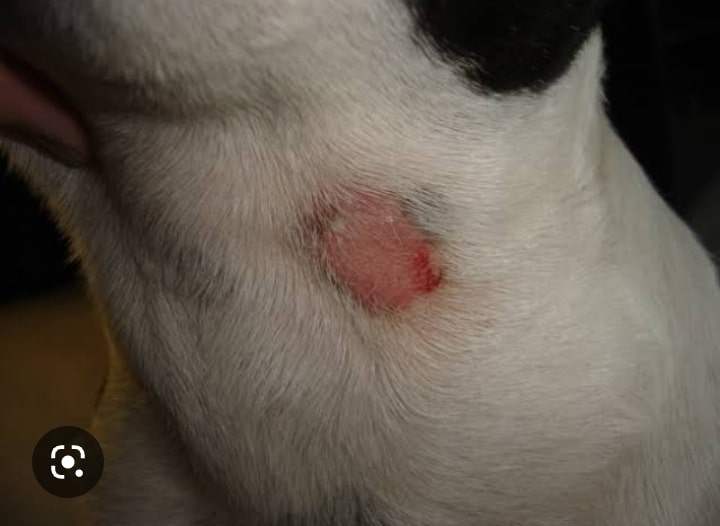
Ringworm is the common name given to a fungal infection of the skin, hair, and nails. Ringworm infections occur in humans as well as dogs and other domestic animals.
It is called ringworm because of the classical appearance of the round, red, raised ‘ring’ marking the boundary of inflammatory lesions in people infected with the disease.
The fungi responsible for ringworm infections belong to a specialized group known as dermatophytes, so medically this disease is called dermatophytosis.
Ringworm is contagious and transmission occurs by direct contact with the fungus. It may be passed by direct contact with an infected animal or person, or by touching contaminated objects or surfaces.
Ringworm is a puppy skin infection which can be transferred from your puppy to you.
Ringworm is treated by using antifungal shampoos or creams, dips, or antifungal pills.
Yeast infection
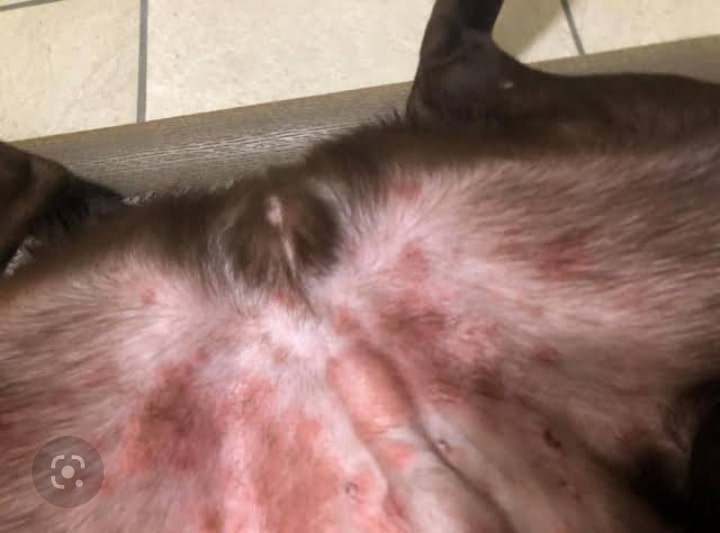
Yeast infection is a puppy skin infection which occurs when there is an abnormal overproduction of the yeast that is normally found on your puppy’s skin.
Yeast is a natural spore-producing fungus on your puppy’s body that doesn’t generally cause an infection unless there is too much of it.
Yeast infection also occurs in dog ears.
Symptoms of yeast infection of puppy skin include: red irritated skin, itching, dark pigmentation, flaky skin, musty odours and more.
Yeast infection is treated by administration of antifungal medication.
Dandruff
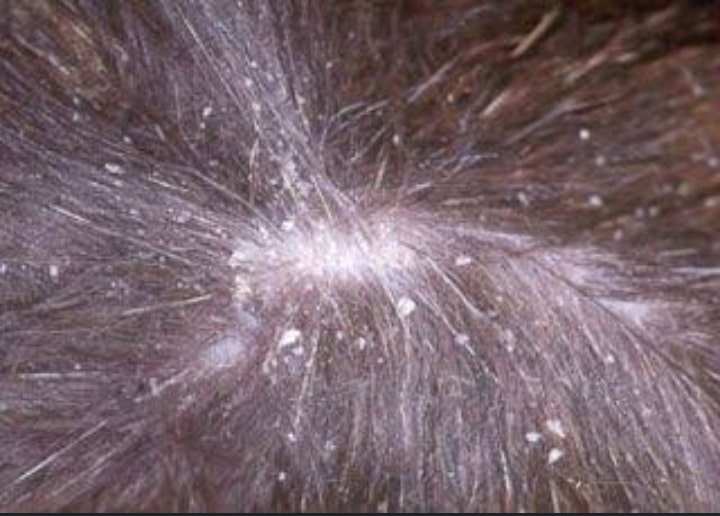
These are white flakes in your puppy’s skin. Medically dandruff is referred to as seborrheic dermatitis.
A dog’s skin cells, like ours, are constantly dying and the dead skin cells are replaced with new ones.
Dogs have the ability to groom themselves to get rid of the old, dead skin cells as they shed, which keeps their coat in top condition.
Puppies tend to develop dandruff more than older dogs. This is because a puppy’s sebaceous glands, which produce an oil that helps to keep their coat looking fresh and shiny, are not fully developed yet.
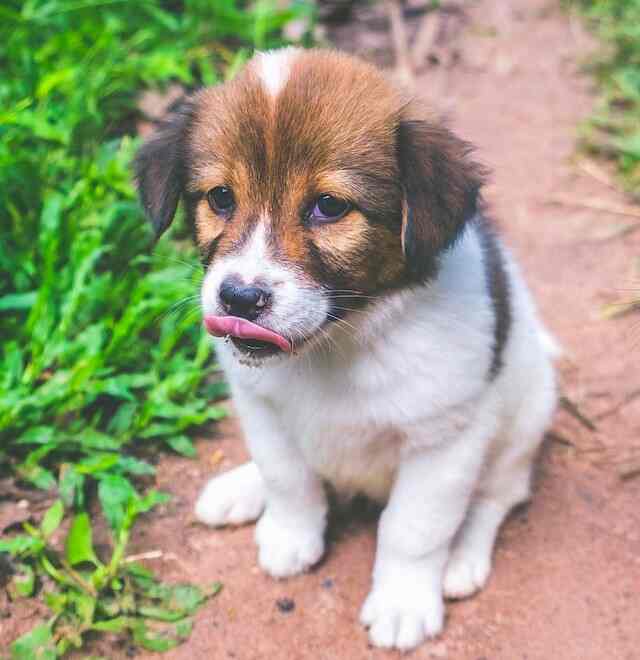
These glands become more developed as your pup gets older, which often will bring an end to their dandruff issues.
Dandruff could also be as a result of allergies, fleas and ticks.
Ways dandruff can be treated include: using antidandruff shampoo, changing your puppy’s diet and giving your puppy supplement.
Skin Abscess

A skin abscess is a puppy skin infection that can be described as “a pocket of pus” which forms on the skin. Sometimes skin abscess on your puppy’s skin could be firm to touch while sometimes its compressible.
The abscess may be large or small, will often cause redness if it is under the skin, and may cause local tissue destruction. Some abscesses will rupture and drain foul-smelling material.
Fever is very common in dogs with abscess, even if the abscess has ruptured and drained to the outside of the body.

One of the most common causes of abscess is a bite from another animal.
Bacteria are introduced through the biting injury into the wound, the wound becomes infected, and depending on the bacteria involved and how deep the bite is, an abscess can develop.
Injuries from objects like sticks and grass seeds that penetrate the skin can also lead to abscesses, a previous infection in that site can also cause abscess.
Hot spots
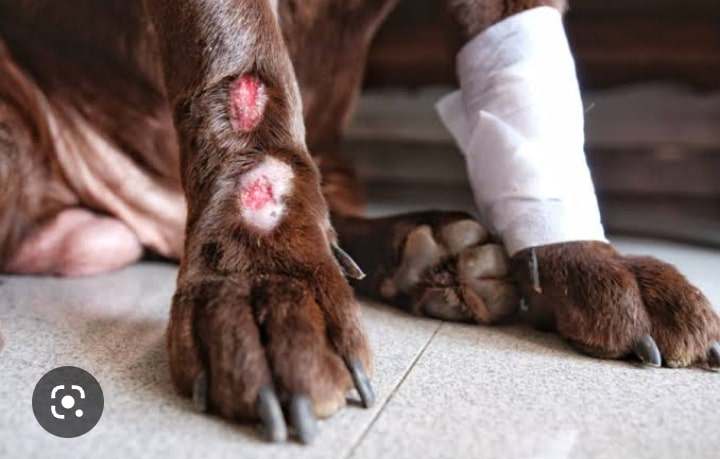
Hot spots in puppies is also known as pyotraumatic dermatitis or acute moist dermatitis. This puppy skin infection are red, inflamed skin lesions that appear quickly, they smell badly, and sometimes contain pus.
Hot spots can appear anywhere on your puppy’s body, but the most common sites are the head, legs, and hips.
Hot spots are often caused by self-trauma when your puppy scratches an itch vigorously causing and open wound.
They are a lot of things which could initially cause itching in your puppy which includes: allergies, poor infection, reaction to insect bites, poor grooming and more.
You should closely monitor hot spots in your because they can dramatically increase in size over a short period of time.

Hot spots are treated by stopping the trauma and preventing the development of a deep skin infection, so the first thing to do is to prevent the self-mutilation.
Ways you could prevent the self-mutilation include:
Using a sock or bandage to cover the hot spot, so they act as a barrier.
Wearing your puppy an Elizabethan collar (also known as an E-collar or cone), by doing this you would prevent the dog from chewing at the hot spot.
Administering topical or oral steroids and antihistamines to reduce your puppy’s itching. Consult your veterinarian before using any medications that are for humans as they could cause harm to dogs.
conclusion
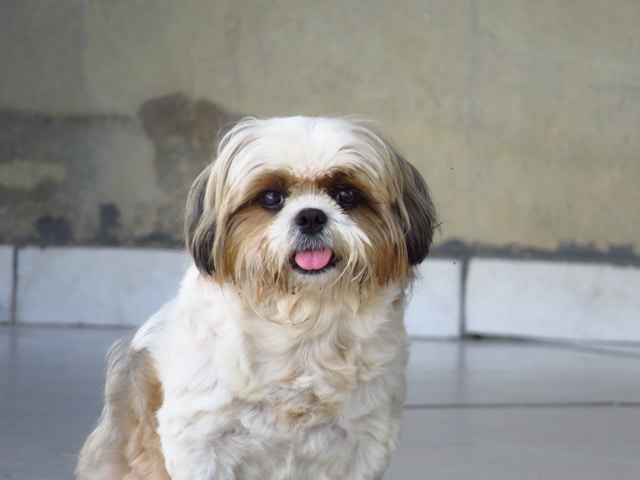
Although most of these puppy skin infections are said to have natural home remedies, I would advice that you always consult your vet, when you suspect your puppy has a skin infection.
Also, to all those puppy parents whose puppies are going through one skin infection or another, i hope they get better soon.
Other health related posts
puppy impetigo overview| signs & symptoms| treatment| recovery
6 responses to “7 MOST COMMON PUPPY SKIN INFECTION WITH PICTURES”
Good web site! I truly love how it is easy on my eyes and the data are well written. I am wondering how I could be notified whenever a new post has been made. I’ve subscribed to your RSS which must do the trick! Have a nice day!
i am happy you find this site valuable
Thank you for your articles. I find them very helpful. Could you help me with something?
what could that be ?
I really appreciate your help
i am glad you do